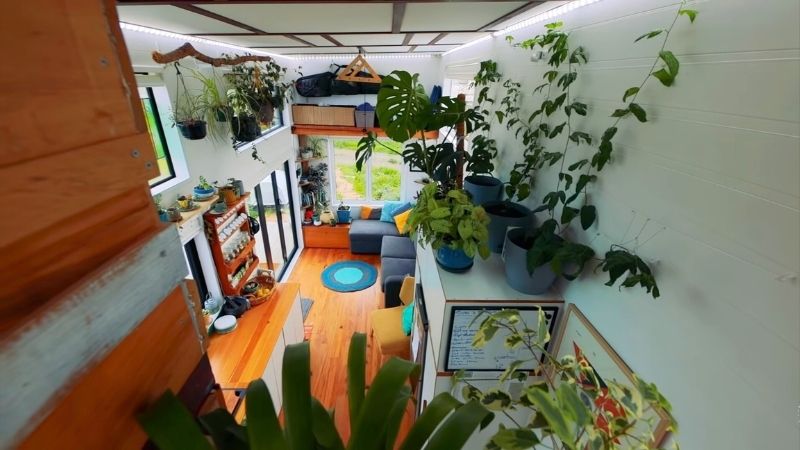If you feel like tiny houses on wheels are getting bigger and bigger, you’re not wrong! Not that long ago, most tiny houses were about 2.5m wide by 7 or 8m long (or even smaller).
These days, most professionals build tiny homes that are 3m wide and up to 12m long, and an increasing number of DIY builders are following suit. Some even consider dwellings 4m wide or more as tiny houses.
Let us make one thing clear. No one owns the term tiny houses, and as such, no one gets to decide what is and isn’t a tiny house. If you want to call your home a tiny house, even if it’s bigger than most tiny houses, go for it!
Having said that, size does matter. While you can call your home a tiny house regardless of its size, make sure you understand the implications of building above a certain size.
Transporting Your Tiny House
First off, size matters when it comes to transporting your tiny house. To be able to legally tow the tiny on its own trailer on public roads here in New Zealand, it must fit the criteria of a light simple trailer. That means your tiny house cannot weigh more than 3,500kg (including the trailer and all other permanent fixtures). It cannot be longer than 12.5m, or higher than 4.3m. The width restrictions are a little more nuanced - the trailer cannot be wider than 2.55m - but if your tiny house is detachable from the trailer you can build up to 3.1m wide before needing a pilot vehicle (see the over-dimensioned vehicle and loads fact sheet from Waka Kotahi/NZTA).
Those who have built within the light simple trailer specification know that the weight limit is often the most challenging criteria to meet. Building at the maximum transport sizes mentioned above will almost certainly result in a tiny house heavier than 3,500kg. So if you’re doing a DIY build, you want to be mindful of that.
Any tiny house that does not fit within this light simple trailer classification will need to be transported as a load on the back of a heavy trailer unit – which will be significantly more expensive than towing it on its own trailer.
Council Consent
There are, unfortunately, no clear rules around when a tiny house needs building or resource consent that apply in all of New Zealand. While MBIE has released guidelines outlining when a tiny house should be classified as a building versus a vehicle, those are guidelines only, and councils across the country do not consistently follow them.
Given this lack of clear legislation, there is no guarantee that you won’t run into issues with the council, regardless of the size of your tiny house. However, the bigger you build, the bigger the chances that a council will decide the tiny house is a building, not a vehicle, which means it will require building and resource consent – both of which can be very challenging and costly to obtain.
This means the bigger you build, the more research you should do to understand council regulations and how your local council will view your tiny house.
Be careful when professional tiny house builders tell you their builds don’t need council consent, especially if they do not meet the light simple trailer specifications. While that attitude might have worked for some of their clients, there is absolutely no guarantee that it will work for you.
Insurance
If you’re part of any of the tiny house Facebook groups, you’ve probably seen the frequent questions about insurance for tiny houses. As it turns out, finding an insurance provider for your tiny house can be much easier said than done – especially when it’s a bigger tiny house. OVI, AMI, FMG, AA, Star, and AON are common providers people use to insure their tiny houses.
In most cases, the tiny house on wheels would be insured as a caravan. However, that generally only works if the tiny fits within the light simple trailer classification. If it is bigger than that, insurance providers will likely argue that it is not a vehicle, and you might have a harder time finding someone to insure it.
In saying that, there's no guarantee that finding an insurance provider will be easy if your tiny house can be classed as a light simple trailer.
Nevertheless, providers deal with tiny houses on a case-by-case basis. Generally speaking, it will be easier to get insurance – at a reasonable price – if your tiny house can be considered a caravan (i.e. it fits within the light simple trailer classification)
If you’re planning to build a bigger tiny house, it’s a good idea to talk to some insurance providers beforehand, so you know what your options are before you commit to the build.
"Generally speaking, the risk of running into trouble grows as the tiny house gets bigger." Another factor to consider in regards to insurance is that a road-legal tiny house (i.e. one that fits the light simple trailer classification), can be covered for both living in it and transporting it under one vehicle insurance policy. On the other hand, an oversized tiny house that is transported as a load will need two separate insurance policies: one to cover it during transport and one for when it's parked up at its destination and you’re living in it. This additional transport insurance can be very expensive, so make sure you include that in your budget.
"An oversized tiny house that is transported as a load will need two separate insurance policies: one to cover it during transport and one for when it's parked up at its destination."


